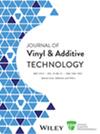Significant role of novel additives in improving the antibacterial properties of rubber composite: A comprehensive review
Abstract
Antibacterial products have gained considerable attention from both the academic and industrial communities due to the transmission of several infectious diseases which has raised public awareness of the disinfection pathways of such highly infectious bacteria. Among the materials that have raised public awareness are rubber composite materials as they are present in many different applications, such as medical apparatus, health care products, food packaging, and house furnishings Therefore, the development of rubber-composite-based materials with antibacterial activity is crucial to avoid the propagation of pathogens. In this regard, researchers have directed their focus toward the development of innovative additives with antibacterial properties to enhance the antibacterial activities of rubber composites. Several promising additives have emerged, most notably metal and metal oxide nanoparticles, biopolymers, plant-derived materials, and synthetic organic compounds. The studies have shown that the incorporation of these additives endows the rubber composites with antibacterial properties, making them applicable in a range of biomedical uses. In light of these findings, the present review aims to cover recent works to improve the antibacterial properties of rubber composites using different additives.
Highlights
- Rubber composite materials, found in various applications like medical apparatus and food packaging, have raised public awareness of infection prevention.
- Development of rubber-composite-based materials with antibacterial activity is crucial for preventing pathogen propagation.
- Researchers focus on innovative additives, including metal nanoparticles, biopolymers, plant-derived materials, and synthetic organic compounds, to enhance antibacterial properties.
- Incorporating these additives into rubber composites endows them with antibacterial properties, suitable for biomedical applications.


 求助内容:
求助内容: 应助结果提醒方式:
应助结果提醒方式:


